Knox Stories
In New Center, Green Oaks Term Continues to be Popular, Successful with Knox Students
One of Knox College’s most beloved programs continues to roll along, embracing the immersive experience unlike few others.
Venture Boldly

Office of Communications
2 East South Street
Galesburg, IL 61401
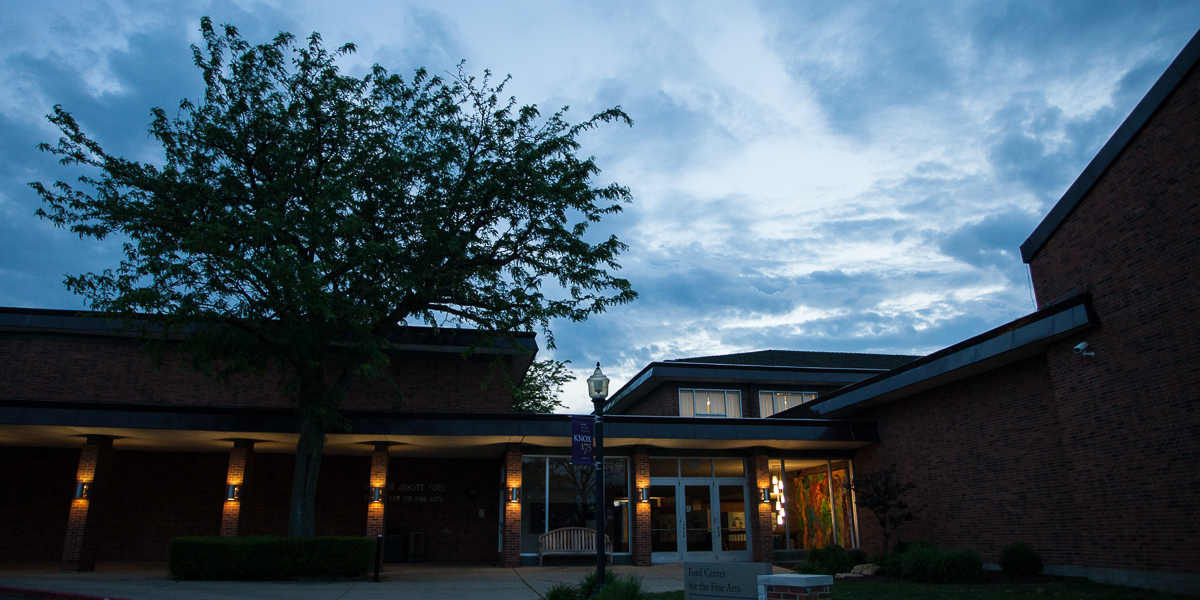
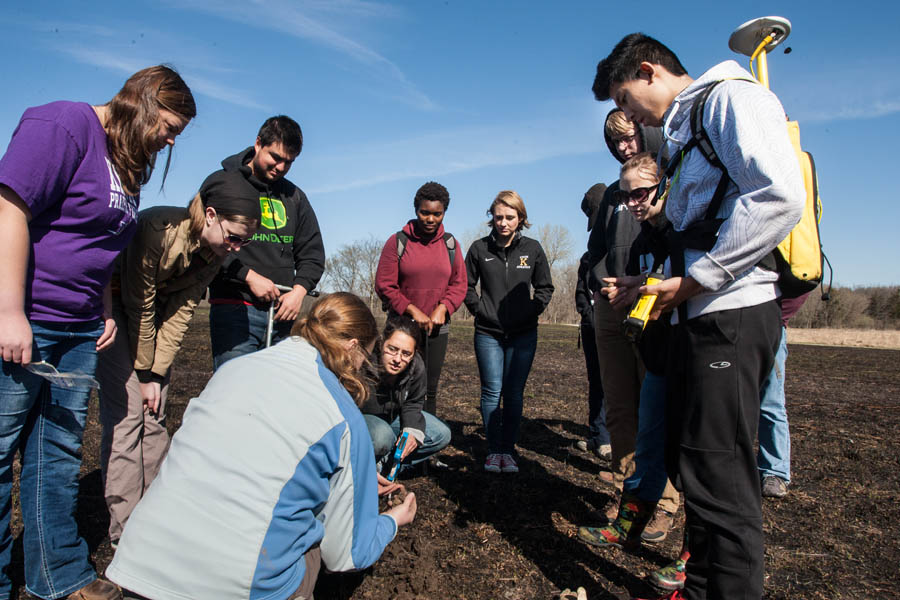
It might look like there's nothing left of the prairie after massive fires, set deliberately by Knox College students and faculty in April, swept through sections of Knox's Green Oaks Biological Field Station. Acres of prairie grasses, several feet tall in some places, were reduced to ashes in the annual Prairie Burn.
But just days later, an environmental studies class was back at Green Oaks, taking samples and GPS data for a research project that will compare the soil composition of burned and unburned areas. Prairie burns are held every year at Green Oaks, simulating the conditions that led to the development of native Midwestern prairies and suppressing invasive and non-native plant species.
"I'm collecting samples for a new research project," said Katherine Adelsberger, associate professor of environmental studies and the Douglas and Maria Bayer Chair in Earth Sciences. "My aim is to examine phosphorous in the soils at Green Oaks. Right now I'm focusing specifically on the effects of the prairie burn on the forms and availability of phosphorous."
Equipped with hand-powered soil augers and GPS gear, students in Adelsberger's Soil Science course have traveled by van to Green Oaks, about 20 miles from campus, several times this spring.
"The physical properties of soil and horizons -- levels in the soil -- are much easier to grasp when you see it, extract it and break it apart in your hands," Adelsberger said.
It's also a lot of fun, according to Emily Passarelli, the teaching assistant in the class. "I had the chance to get my hands dirty and be outside -- Soil Science was one of my favorite classes," she says. Working as the TA in the course "allowed me to participate in the class again, and also help other students -- the class is pretty tough."
Adelsberger and the students went to Green Oaks prior to the burn on April 4, and one week later, to take samples from burned and unburned prairies, as well as a third site in a forested section. The samples will be used by the class for a first round of analysis on Knox's nuclear magnetic resonance spectrometer.
"I will use this term's data to develop a more intensive sampling strategy," Adelsberger says. "Next year we will be ready to collect a lot of samples and start looking at whether there is a change in phosphorous availability due to the burn, and examining the change, over time, in nutrient availability."
Green Oaks includes more than 700 acres of prairie, forest and aquatic habitats; including some areas previously used for farming or strip mining. Prairie restoration began at Green Oaks more than 50 years ago, making it of one of the nation's oldest prairie restoration projects. Every three years, a residential, multidisciplinary immersive learning program, Green Oaks Term, is held there.
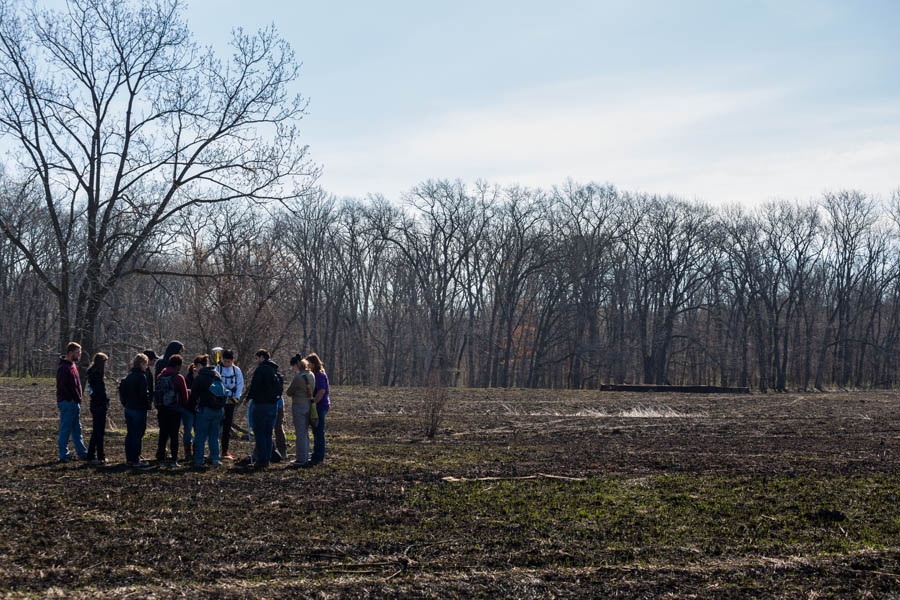
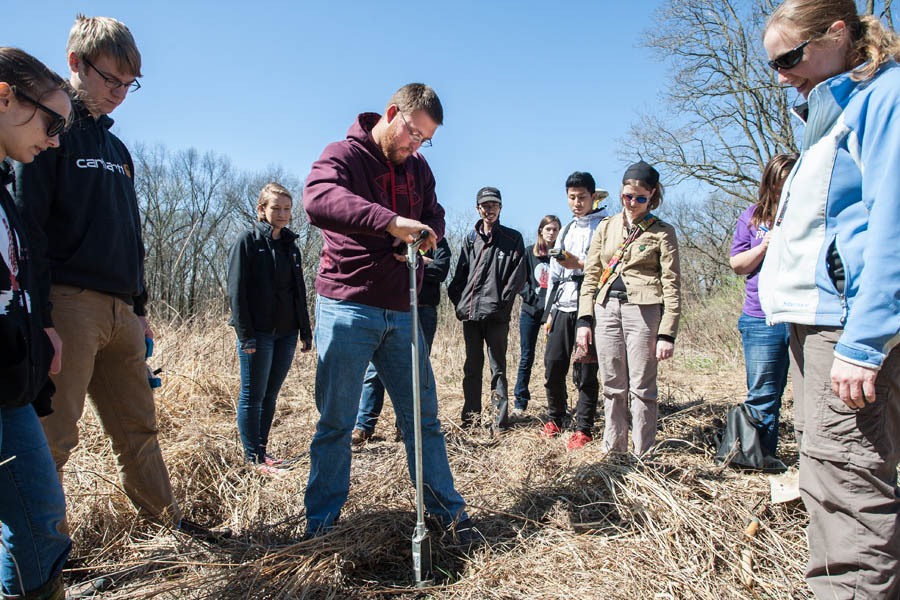
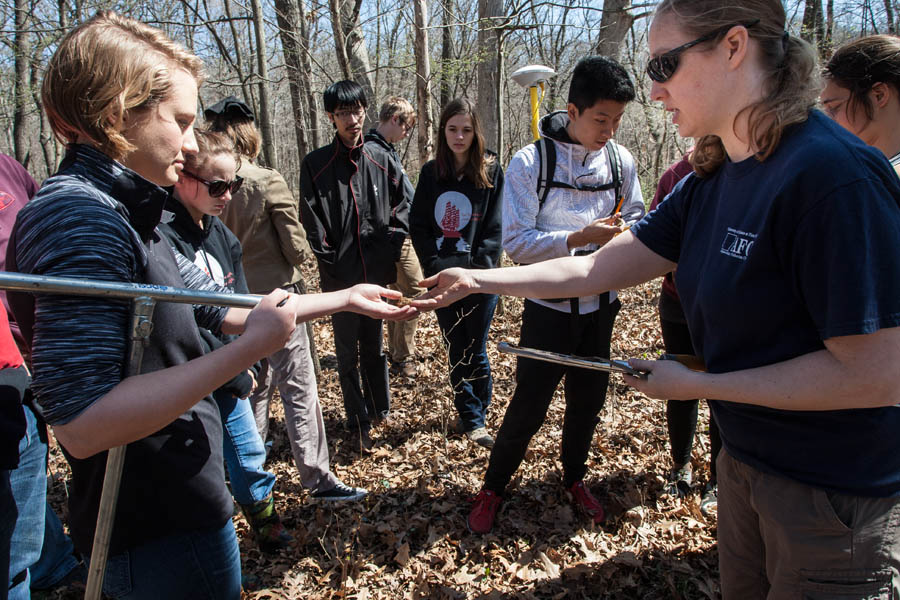
Above, Knox College Environmental Studies professor Katherine Adelsberger and students in her Soil Science class gather samples and data from burned and unburned sites at the Green Oaks Biological Field Station.
Published on May 06, 2015